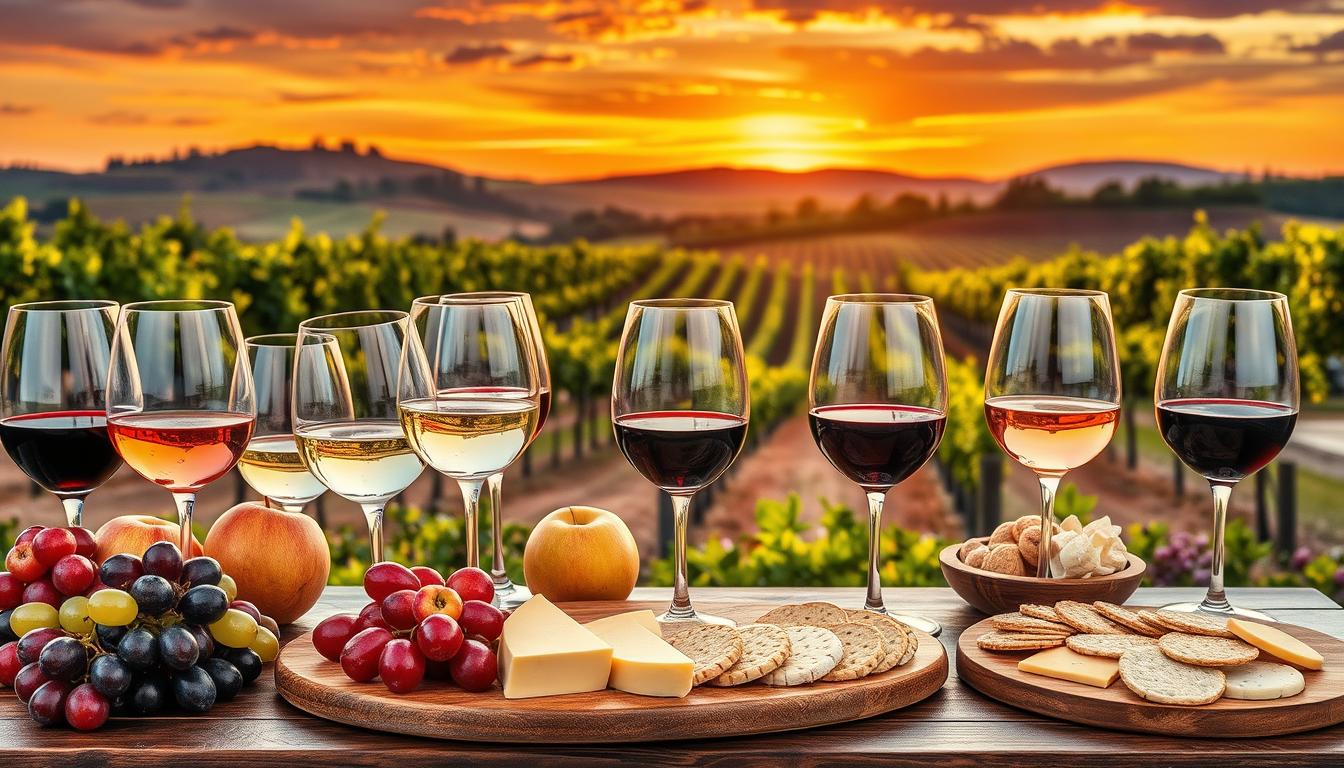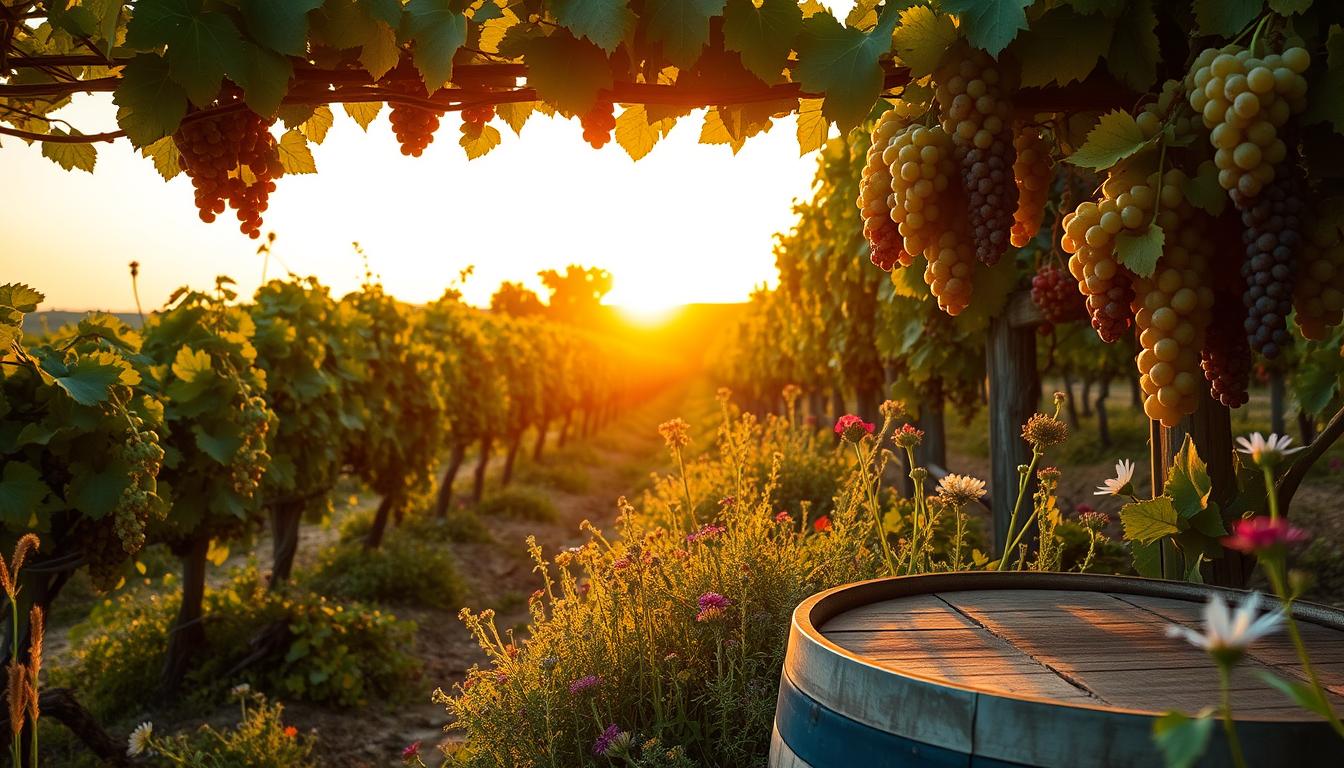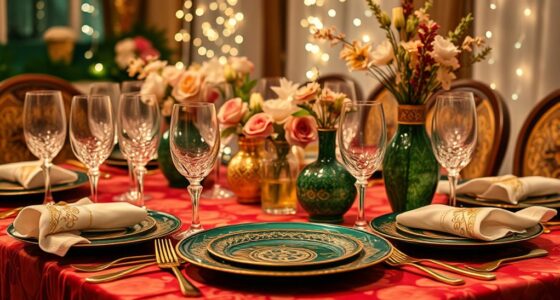Imagine walking into a sun-kissed vineyard, the scent of ripe grapes dancing in the air, and the promise of a delightful wine experience beckoning you. With each sip of wine, there’s a story waiting to unfold, an emotion to savor, and a new flavor to discover. Wine tasting is more than just a pastime; it’s a journey that invites you to engage all five senses. Whether you’re a curious beginner or a seasoned enthusiast, this wine guide aims to enhance your appreciation and understanding of this exquisite art. Get ready to explore essential wine tasting tips that will elevate your experience, turning every gathering into a memorable celebration of taste. To achieve the perfect wine tasting experience, it’s important to pay attention to the color, aroma, and taste of each wine, allowing yourself to fully immerse in the moment. Understanding the different varietals, regions, and production methods will enrich your wine tasting journey and help you discover new favorites. With a blend of knowledge, curiosity, and an open mind, you will be sure to create unforgettable memories and experiences in every sip.
Key Takeaways
- Wine tasting involves engaging your senses to appreciate various flavors and aromas.
- Understanding primary, secondary, and tertiary aromas can enhance your tasting experience.
- The wine’s sweetness and acidity significantly impact its taste perception.
- Attending tastings provides opportunities to refine your palate and discover new wines.
- Pairing wine with food can elevate both the wine’s and the dish’s flavors.
- Taking notes during tastings helps you remember your preferences for future selections.
Understanding the Basics of Wine Tasting
As you venture into the world of wine, grasping the wine tasting basics is essential for a richer experience. Not just a casual selection of your favorite bottle, wine tasting transforms into an art form when you take the time to understand its fundamental components. Start by examining the visual traits of the wine, which tell stories about its grape varieties and potential flavors. Look for clarity, which reveals the purity and quality of the wine, indicating how it was processed.
Next, you’ll engage in the “5 S’s” of wine tasting: See, Swirl, Sniff, Sip, and Savor. Each of these steps enhances your ability to appreciate and enjoy your glass fully. When you observe the color, note how it affects its appeal and what it suggests about the tasting experience. The legs that form on the inside of the glass reveal viscosity and alcohol content, contributing to the overall texture and mouthfeel.
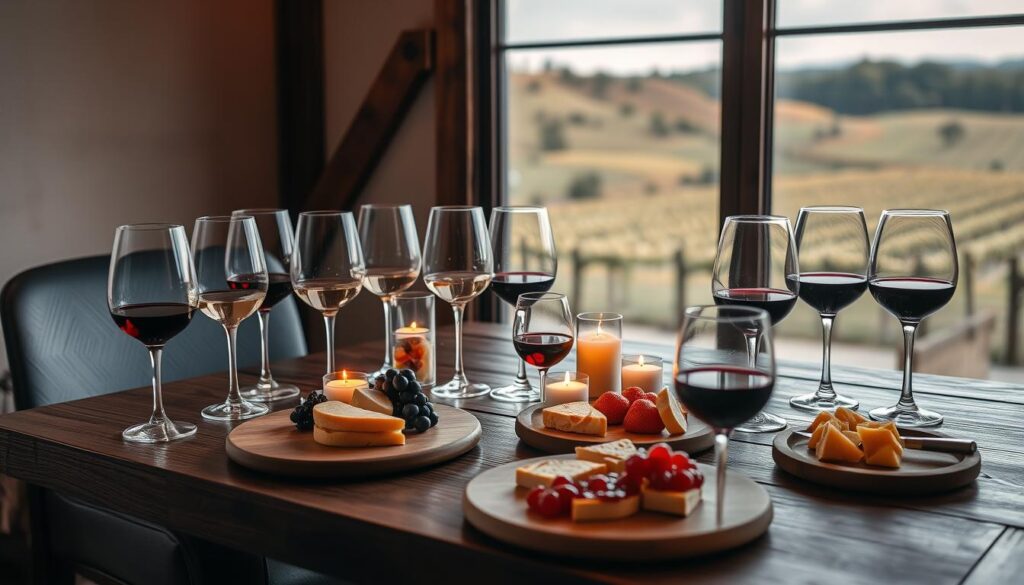
Equally important is the aroma. By swirling the wine, you release aromatic compounds, amplifying the scents that characterize the drink. These aromas come from the grape itself, the fermentation process, and any aging in barrels. It’s where essential wine tasting knowledge shines, as recognizing these fragrances elevates your sensory experience. When tasting, focus on the wine’s structure—assessing sweetness, acidity, tannins, body, flavors, and aftertaste.
This intricate evaluation culminates in what professionals refer to as the finish, a lingering sensation that indicates quality and complexity. Balance plays a crucial role, harmonizing the components for a satisfying sip. Complexity, marked by multiple layers of aromas and flavors, offers nuanced experiences that can captivate your palate.
Finally, familiarize yourself with common wine tasting terms. Understanding words like acidity, tannin, bouquet, finish, and notes will greatly enhance your conversation and engagement with fellow wine enthusiasts. Embracing the fundamentals will set you on a path to becoming a more informed and passionate wine lover.
Essential Wine Tasting Techniques
Exploring the world of wine involves mastering several essential wine tasting techniques. Understanding how to taste wine effectively enhances your experience and enjoyment. One foundational strategy is the systematic approach known as the Five S’s: See, Swirl, Sniff, Sip, and Savor. This technique allows you to engage all your senses, making your tasting experience both comprehensive and enjoyable.
The first step, seeing, involves examining the wine’s color and clarity. A deep examination can reveal a lot about a wine’s age, grape variety, and potential quality. Following this, swirling the wine in your glass introduces oxygen, significantly enhancing the wine’s aromatic profile. Many enthusiasts find that utilizing tulip-shaped wine glasses maximizes this experience, as they help concentrate the aromas.
Next, sniffing confirms the aromas released from the wine. A good sniff can unveil a range of scents, from fruity notes to complex secondary and tertiary aromas developed during fermentation and aging. It’s during this part of the process that you can start identifying personal preferences based on what scents and flavors captivate you most.

When you move to tasting, pay attention to the different flavors the wine offers. Assess factors like acidity, sweetness, and tannins. Bring awareness to the wine’s texture, or “mouthfeel,” which significantly impacts the overall tasting experience. Fine-tuning your palate to these characteristics will lead to more informed wine selections in the future.
Keeping a wine journal proves invaluable for tracking your discoveries. Documenting your thoughts about each wine, including its aromas, tastes, and how they compare to others can deepen your understanding of your preferences over time. Investing in necessary tools like corkscrews and wine aerators can also contribute to an enhanced tasting experience, making each sip more rewarding.
Do’s and Don’ts of Wine Tasting
Wine tasting etiquette plays a crucial role in creating an enjoyable experience. Understanding the wine tasting dos and don’ts can elevate your enjoyment and appreciation of each pour. Embrace the experience by immersing yourself in the flavors, aromas, and conversations that surround wine. Set aside any preconceived notions and allow the wines to reveal their characteristics.
Embrace the Experience
Fully engaging with the tasting means actively exploring the wines presented to you. Make it a point to:
- Start with lighter wines before moving to fuller-bodied options.
- Take time to admire the color and clarity in your glass; this sets the stage for what’s next.
- Be kind and polite to others in the tasting room, as it enhances the overall atmosphere.
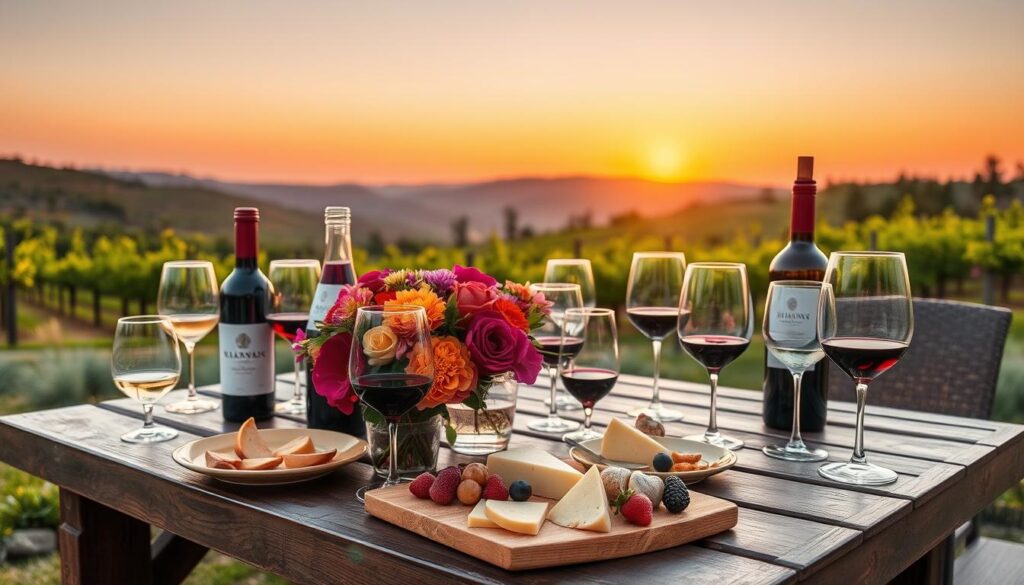
Don’t Be Afraid to Ask Questions
Engage with sommeliers and staff at the wineries. Asking questions not only helps you learn but also fosters a friendly atmosphere. Inquire about:
- The wine’s origins and production methods.
- Flavor profiles, including what to look for in terms of notes and aromas.
- Recommendations based on your taste preferences.
Following these wine tasting dos and don’ts will enhance your appreciation of the experience. Remember, asking for guidance is never a sign of weakness; it often leads to a deeper understanding of the wines you are enjoying. So embrace this unique journey, stay curious, and savor each sip.
How to Properly Swirl and Sniff Your Wine
Swirling and sniffing your wine are essential steps in the tasting process, allowing you to explore its rich aroma and flavor profile. With the right swirling wine technique, you can unlock the hidden aromas that contribute significantly to your wine experience. This section will provide insights on how to swirl and sniff effectively for a delightful wine aroma discovery.
The Importance of Swirling
When you swirl wine in your glass, you introduce oxygen, helping it to breathe and revealing flavor compounds. Around 80% of a wine’s flavor comes from its aroma. Holding your glass by the stem is crucial to prevent your hand heat from warming the wine, which could mask its enticing scents. Keep in mind that certain wines, like sparkling varieties, may not benefit from swirling, as this can release carbon dioxide and diminish their fizz.
- Swirl gently to avoid rapid fragrance evaporation.
- Older wines, such as aged Bordeaux, should be decanted gently to preserve their delicate aromas and flavors.
- Excessive swirling may detract from the subtlety of the tasting experience.
Unlocking Aromas through Sniffing
Sniffing your wine properly can reveal a complex array of aromatic elements, from fruits to spices. To enhance this experience, consider taking a sip and gently sucking in air. This technique helps to soften the flavors, especially in wines that might initially seem closed off. Experimenting with different sniffing methods can allow for a better understanding of each wine’s profile.
“Don’t hesitate to ask the sommeliers questions to enrich your understanding and enjoyment.”
Remember, the average pour at wine tastings is around one ounce. Opt for high-quality wine glasses, like those from Reidel, to experience the full range of flavors. The aftertaste of a high-quality wine can linger from one to three minutes, allowing you to savor its complexity long after the sip.
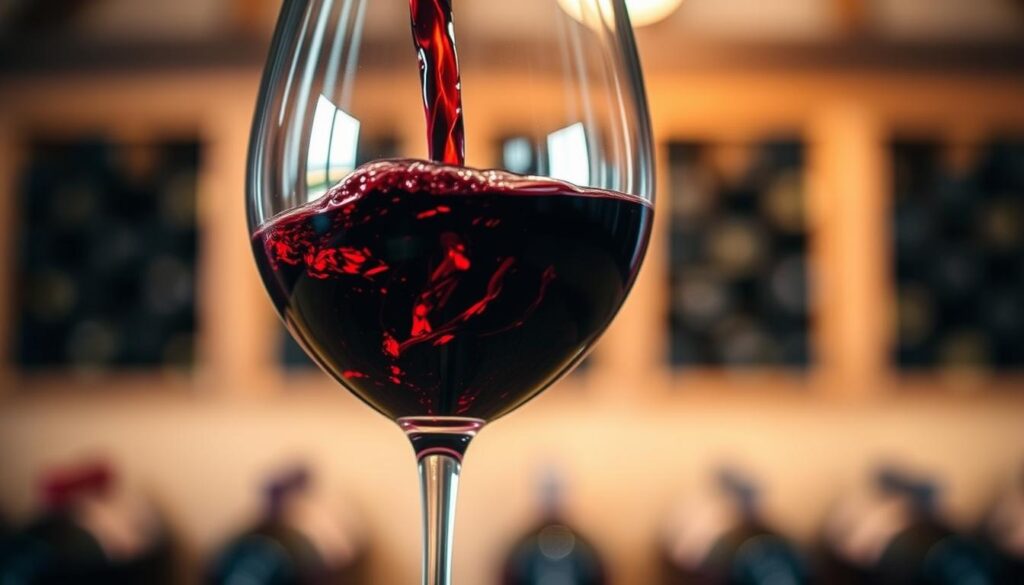
| Technique | Benefit |
|---|---|
| Swirling | Introduces oxygen, reveals flavor |
| Sniffing | Uncovers aromatic elements |
| Sipping with Air | Enhances flavors in closed wines |
| Holding by Stem | Prevents warming and preserves aroma |
| Gentle Decanting | Protects aromas and flavors in older wines |
How to Taste Wine: A Step-by-Step Guide
Tasting wine involves a delightful journey through the senses, and understanding the essential tasting wine steps can enhance this experience. By following a structured approach, such as The 5 S’s of Wine Tasting—See, Swirl, Sniff, Sip, and Savor—you will deepen your appreciation for the wine tasting process.
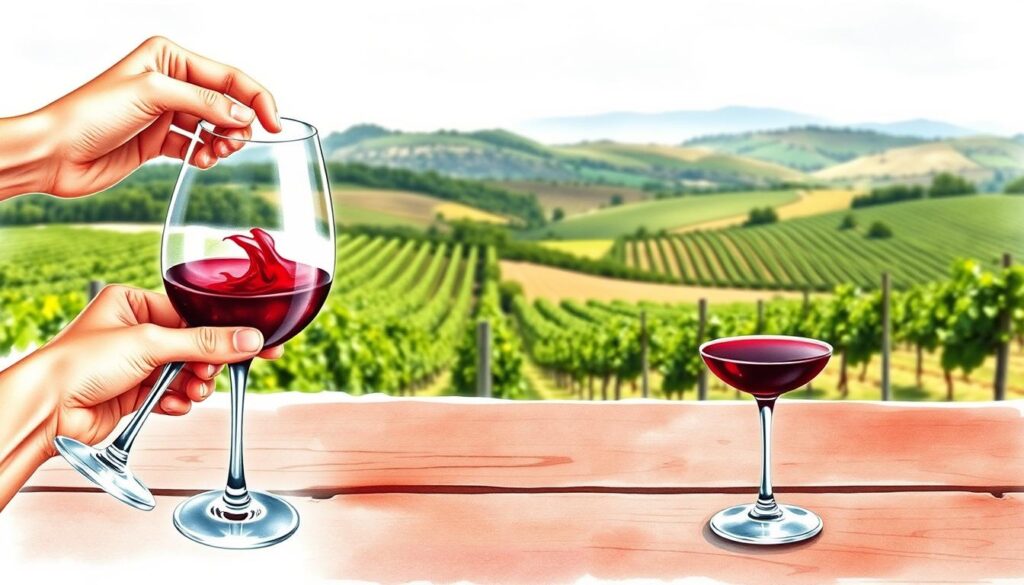
Begin with seeing the wine. Assess the color intensity and hue, and look out for any bubbles or sediment. These visual characteristics can indicate details about the grape varieties and winemaking techniques employed. A wine’s color can often provide clues to its age and style. For red wines, notice how the color shifts as they mature. White wines can gain color, becoming more golden when sourced from warmer climates, thanks to flavonols.
The next step is swirling. This action allows the wine to mix with oxygen, releasing aromatic compounds that are critical for the next step. Use a swift, fluid motion to swirl the wine, then observe the ‘legs’ that form on the inside of the glass. The way they develop can suggest the wine’s alcohol content and sweetness level.
Once you have swirled, it’s time to sniff. Engaging your olfactory senses maximizes aroma perception, which is vital in evaluating any wine. Take your time here, inhaling deeply to detect both primary, secondary, and tertiary notes. The variety of scents can transport you emotionally, often evoking memories tied to different experiences.
Subsequently, move on to sipping. This stage requires attention to flavor and texture. As you taste, consider how the wine interacts with your palate and identify specific flavor profiles. A proper technique is to slurp the wine slightly, as this action enhances flavor perception through aeration.
Finally, take a moment to savor. Reflect on the wine’s finish and how the flavors linger on your palate. Each sip should offer a different insight, encouraging a thoughtful approach to enjoyment. Throughout this entire process, remember that personal preference plays a significant role in how you experience wine.
Engaging in this sequential wine tasting process allows you to uncover layers of complexity within the wine, making each tasting a unique event worth savoring.
Wine Tasting Tips for Beginners
Embarking on your wine tasting journey can be an exciting experience. Getting acquainted with effective beginner wine tasting tips helps ease the transition and enhances your enjoyment of the process. Simplifying your approach will allow you to concentrate on the pleasure each sip brings while comfortably advancing in your exploration of flavors.
Starting with the Basics
Begin your tasting experience by selecting a few wines, typically between two to eight, to sample. This will help avoid feeling overwhelmed. Tasting events usually last from 30 minutes to multiple hours, offering flexibility to enjoy leisurely. Smaller group tastings, often limited to 2-6 participants, can provide a more intimate experience, allowing you to engage deeply with the wines and the host’s guidance.
Using Your Senses Effectively
Utilizing your senses in wine tasting is crucial for a comprehensive experience. Focus on:
- Sight: Observe the wine’s color; for instance, deep purple-black hues often indicate robust varietals like Syrah.
- Smell: Take a moment to sniff; this helps in identifying aromas. Consider avoiding strong perfumes before the tasting as they can interfere with the wine’s bouquet.
- Taste: Take a small sip, swish it around your mouth, and pay attention to how it feels on your palate. Noticing the tannins and aftertaste provides deeper insights.
- Spitting: Don’t hesitate to spit if you’re tasting several wines. This maintains your clarity of taste and enables you to sample more offerings without excessive intoxication.
Your beginning will set the tone for growth in wine appreciation. By mastering these beginner wine tasting tips and honing your senses in wine tasting, you embark on a delightful journey through the world of wines.

Understanding Tasting Notes and Wine Vocabulary
Grasping the nuances of wine tasting notes and wine vocabulary greatly enhances your appreciation for different wines. Tasting notes allow you to capture your experiences, helping you articulate flavors and aromas with clarity. Developing your wine vocabulary can make this journey engaging and enriching.
Wines can be classified into two primary flavor categories: Fruit Forward and Savory. Understanding these can aid in identifying specific terms that describe the wine you are tasting. For example, Fruit Forward red wines may evoke descriptors such as blackberry, blueberry, and prune, while white counterparts can present notes like ripe peach, mango, or crème brûlée. In contrast, Savory red wines might include flavors of cranberry, green peppercorn, and sage; white wines here could offer hints of lime, grapefruit, and grass.
Additionally, sweetness levels in wines create distinct tasting experiences. Wines can be classified as Bone Dry, Dry, Off Dry, or Sweet. Sweet wines can have anywhere from 3 to 28 grams of sugar per 5-ounce glass. Sparkling wines also use specific vocabulary, such as Brut and Demi-Sec, to indicate their sweetness. Recognizing these categories enhances your capacity to describe and appreciate different wines.
The body profile of a wine adds another layer to your tasting experience. Wines can be Light Bodied, Medium Bodied, or Full Bodied. Light-bodied red wines might resonate with terms like subtle, delicate, and bright, while their white counterparts could be described as zesty or airy. Medium-bodied reds may include notes of moderate or juicy, whereas full-bodied reds may come across as rich and intense.
Evaluating a wine’s finish provides insights into its complexity. There are three common types: Tart Finish, Sweet Tannin Finish, and Dried Fruit Finish. Common descriptors include velvety, creamy, and plush for a smooth finish, while spicy finishes might present as peppery or lively. Understanding these traits enhances your overall tasting notes.
When tasting, take a systematic approach using the four main components: Look, Smell, Taste, and Think. Each element contributes to your enjoyment and helps in crafting more detailed wine tasting notes. The colors and clarity of a wine can reveal much about its age and production methods, while the aroma compounds offer essential clues regarding the flavors you may encounter.
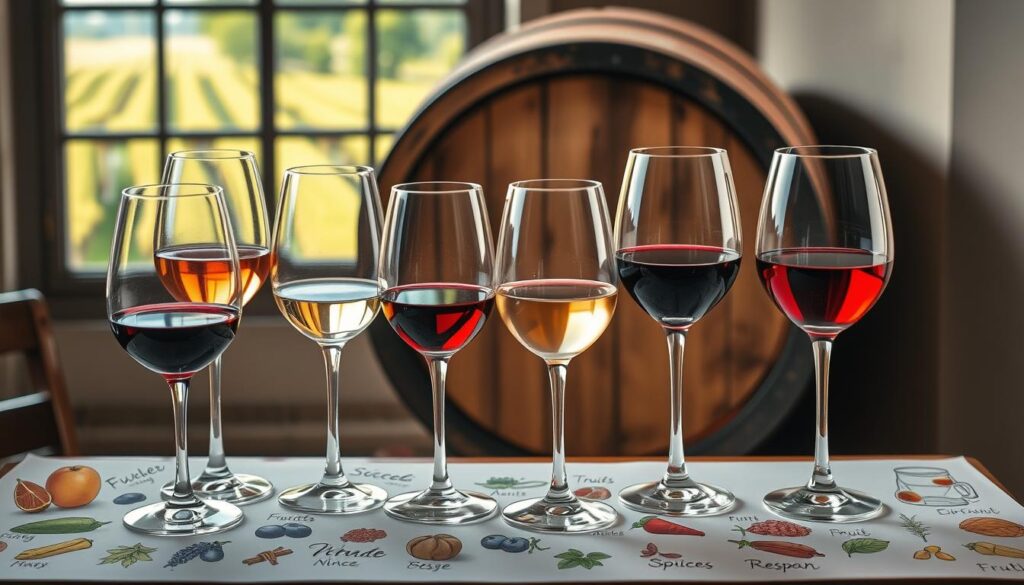
Ultimately, honing your tasting vocabulary not only aids in personal exploration but promotes effective communication with fellow wine enthusiasts. Specificity in your notes and a willingness to compare different wines can significantly enhance your understanding and enjoyment of each sip. As you learn and grow, don’t shy away from describing your feelings—embrace the subjective nature of wine tasting!
Food Pairing Strategies for Wine Tasting
When it comes to enhancing your food and wine experience, understanding the principles of wine food pairings is essential. Pairing the right food with the appropriate wine can elevate both flavors, creating a delightful experience for your palate. Consider the basic components of taste: Salt, Acid, Sweet, Bitter, Fat, and Spice. These elements play a crucial role in how well your food and wine complement each other.
Different categories of wine have distinct taste profiles that can guide your pairings:
- Red wines: These often showcase more bitterness.
- White, rosé, and sparkling wines: Characterized by higher acidity.
- Sweet wines: Notable for their sweetness.
To illustrate the interaction between wine and food, consider a dish like baked macaroni. It offers primary components of fat and salt, which can influence your wine choice. Light wines typically pair well with lighter foods, while rich dishes harmonize with bold wines. For instance, pairing a Sauvignon Blanc, known for its light body and high acidity, with a baked goat cheese salad can amplify the dish’s flavors.
Pairing ideologies often suggest matching the intensity of food with wine, using contrasting or congruent pairings to create effective combinations. For example, you can complement a rich mac and cheese with a creamy Chardonnay or a light Pinot Noir, showcasing the versatility of these wine food pairings.
The following table summarizes some complementary and contrasting pairing options for various dishes:
| Dish | Complementary Pairing | Contrasting Pairing |
|---|---|---|
| Baked Macaroni | Chardonnay | Pinot Noir |
| Duck with Fruit Sauce | Low-Tannin Rhône Wine | Full-Bodied Cabernet Sauvignon |
| Spicy Indian Food | Off-Dry Riesling | Chardonnay |
While there are suggested guidelines for wine food pairings, personal taste preferences play a significant role, with approximately 80% of successful pairings relying on your own palate. Don’t shy away from unconventional combinations; matches from the same region, like pairing Comté cheese with Jura wine, often yield satisfying results. The joy of experimenting with flavors is what defines a memorable food and wine experience.
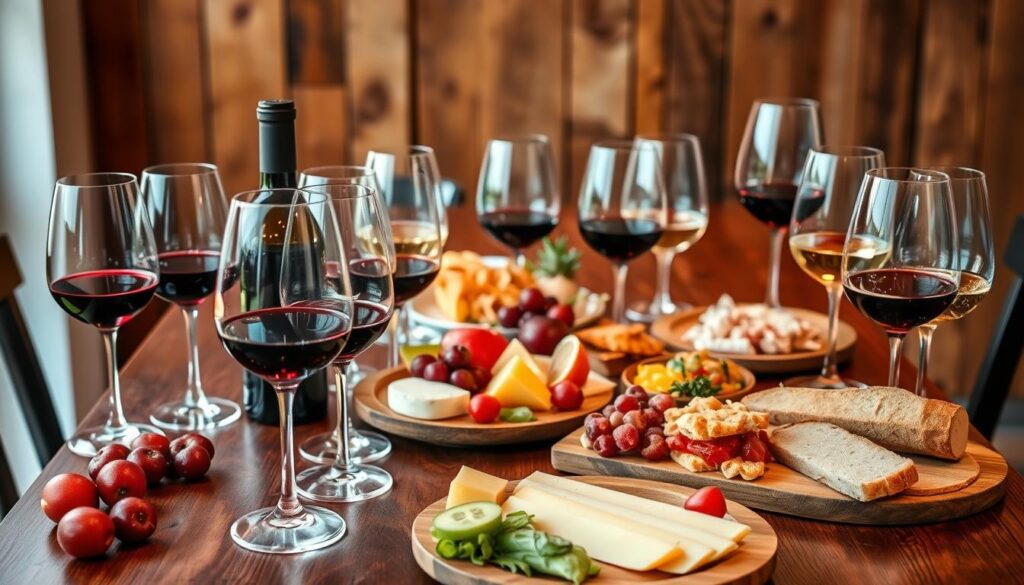
Creating a Memorable Wine Tasting Party
Hosting a wine tasting party offers a splendid opportunity to explore varietals while enjoying good company. With some creative planning, you can orchestrate an engaging event that balances the fun of tasting with the sophistication of carefully selected wines. Here are some ideas and tips to make your wine tasting party unforgettable.
Wine Tasting Party Ideas
Consider incorporating themes to elevate the experience at your wine tasting party. Here are a few ideas:
- Around the World in Eight Glasses – Feature wines from various countries.
- Let’s Get Bubbly – Focus mainly on sparkling wines.
- Natural Wine Night – Engage guests with lively discussions about organic selections.
- Fiesta de Vino – Highlight Latin-inspired wines.
- Magic Night – Create a whimsical atmosphere with fairy lights.
Integrating food into your party can also create a more inviting atmosphere. Encourage guests to contribute dishes that pair well with the wines selected. For larger gatherings, consider enlisting the help of a guest chef or friends for food preparation.
How to Select Wines for Tasting
Choosing the right wines for your tasting event is essential. Aim for five to seven different wines for small groups; this number allows for variety without overwhelming guests. For a gathering with 12 attendees, provide at least two bottles of each wine for generous pours. To illustrate:
| Number of Guests | Wines to Select | Number of Bottles Needed |
|---|---|---|
| 12 | 5-7 | 10-14 |
Pour size matters; a standard 750 ml bottle contains 25 ounces, which can serve 12 guests with two-ounce pours or four to five guests with six-ounce pours. Over-prepare if possible; having more wine than needed is preferable to running out. Leftovers can always be enjoyed later.
Arrange tastings every 15 to 20 minutes and share intriguing stories about each wine to keep the conversations flowing. Remember to provide palate cleansers such as bread and mild cheese. As guests savor each sip, engage them with discussions about the cultural facets of the wines showcased.
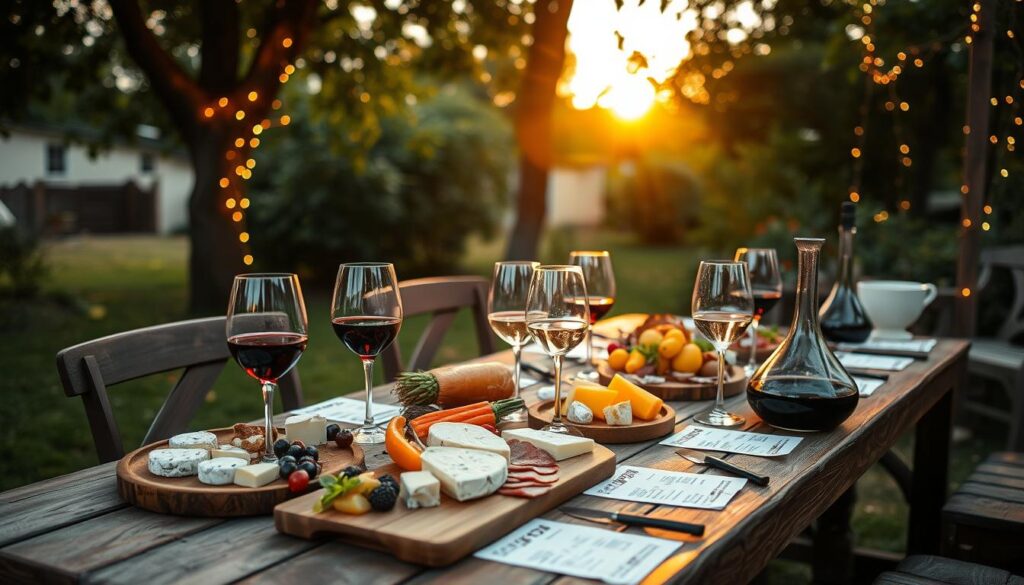
Wine Tasting Checklist: Your Essential Guide
Preparing for a wine tasting can enhance the overall experience significantly. A well-structured wine tasting checklist serves as an essential tool to keep you organized throughout the event. Here’s a comprehensive guide to the various elements to consider before, during, and after your wine tasting.
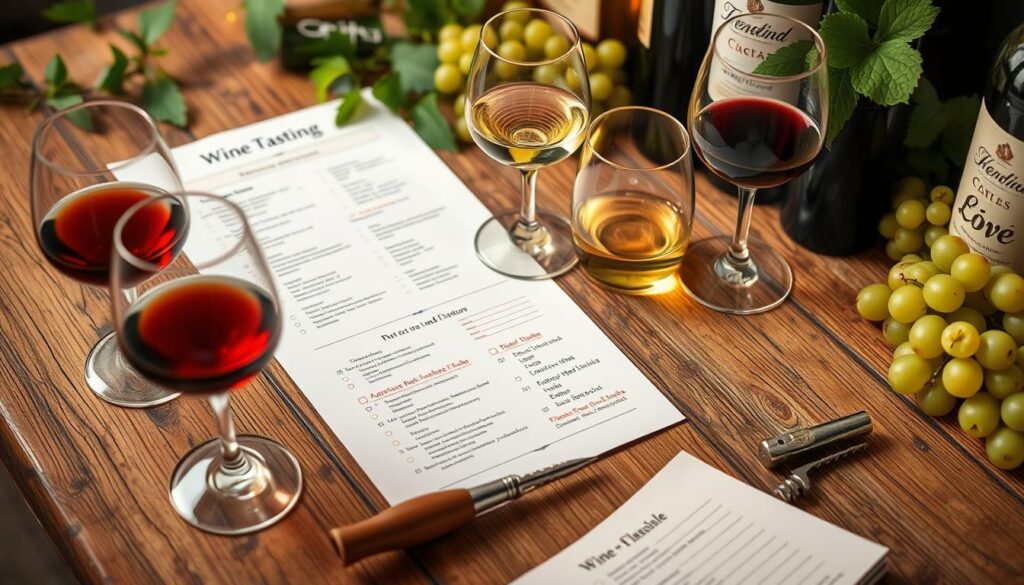
Start by selecting the right number of wines to showcase. An average wine tasting event should feature 8-10 different wines for guests to enjoy. When hosting, plan for one bottle of each wine for every 12 guests. This means having 8-10 bottles on hand. Given that a bottle typically yields about 13 two-ounce pours, this will ensure everyone has a chance to savor the selection.
Focus on a diverse range of wines to represent various taste profiles. Aim for a mix of sparkling, white, and red wines, with a ratio of 2-3 white wines to 6-7 red wines. This combination epitomizes wine tasting essentials and caters to differing preferences among guests.
Budgeting is key for a successful tasting. Expect to allocate between $25 and $70 per guest, with an impressive event usually averaging around $50 per person. This allows you to select quality wines that will captivate your guests’ palates.
Next, gather the necessary supplies. You will need:
- Wine glasses (2 per person for seated events, 1 per person for reception-style)
- Dumping buckets
- Ice for chilling bottles
- Pens for note-taking
- Display platters for food pairings
- Water bottles for palate cleansing
- Cleaning supplies for post-event tidiness
Consider a total of 6 bottles for your tasting party, ensuring a variety of producers and types. Opt for varietals such as Cabernet or Chardonnay, and include both domestic and foreign wines, ideally with a 1-2 year vintage spread.
Preparing water glasses with fresh, chilled water is critical for palate cleansing. Equally, having neutral snacks like unflavored breadsticks or crackers will help absorb and cleanse between tastings, ensuring each new wine is enjoyed to its fullest.
Each participant should bring or be provided with 6 glasses. Alternatively, have extras on hand for those who might forget. To keep the wines exciting, consider using wine bags or masking the identities, numbering them from 1 to 6.
Providing plastic spit cups can also be beneficial, allowing tasters to manage their consumption while savoring each wine’s unique profile. Lastly, maintain a record of wines purchased, including vintage, cost, and comments from reputable sources like Wine Spectator or Wine Enthusiast. Utilizing a specific wine scoring card during the tasting session can aid in capturing your thoughts and favorites for future reference.
With this detailed wine tasting checklist in hand, you’re set to create an unforgettable wine tasting experience.
Conclusion
Embracing the wine tasting movement is an exciting adventure filled with unique experiences and rich discoveries. As you explore the aromas, flavors, and textures of different wines, remember that each tasting session presents an opportunity for personal growth. You gain insights not only into your preferences but also into the intricacies of wine itself.
Savoring wine is not just about sipping; it’s about engaging your senses and appreciating the artistry behind each bottle. By applying the tips outlined throughout the article, you can enhance your tasting skills, making each occasion memorable. Whether you’re with friends or part of a larger gathering, wine tasting fosters camaraderie and connection, creating unforgettable moments.
As you cultivate your palate, keep in mind that every wine holds a story. From its visual appeal to its intriguing aromas and balanced flavors, each sip invites you deeper into the world of viticulture. So, pour yourself a glass, let go of formalities, and fully enjoy the journey of wine tasting. Cheers to discovering the wonders of savoring wine!
